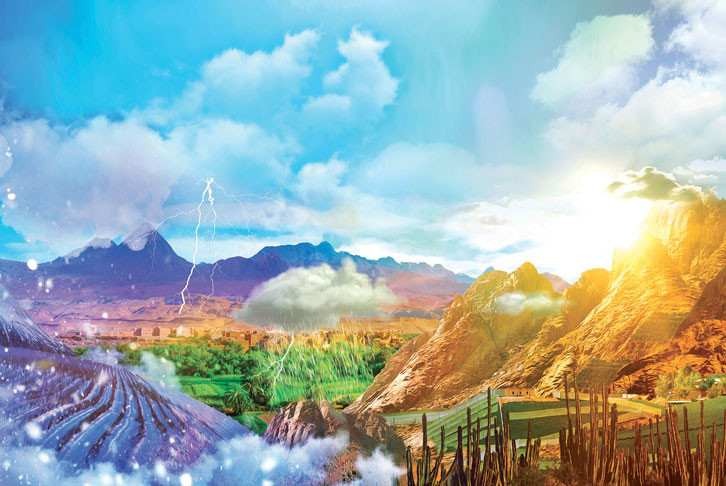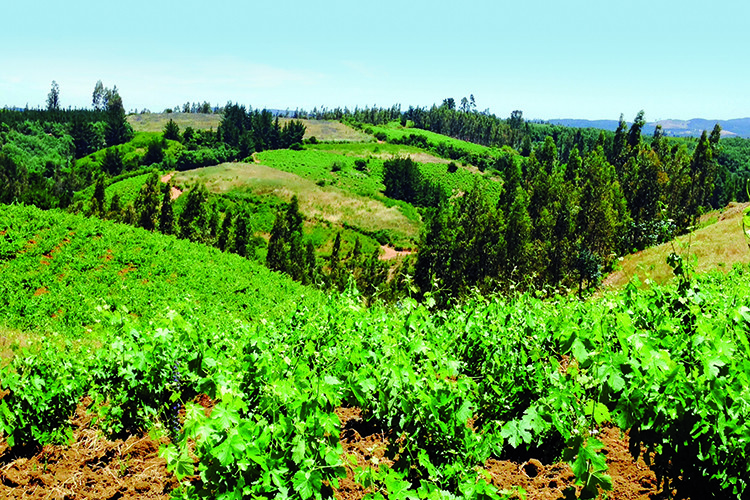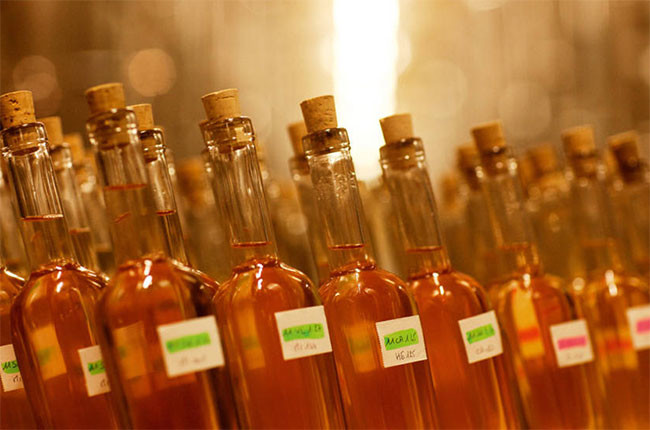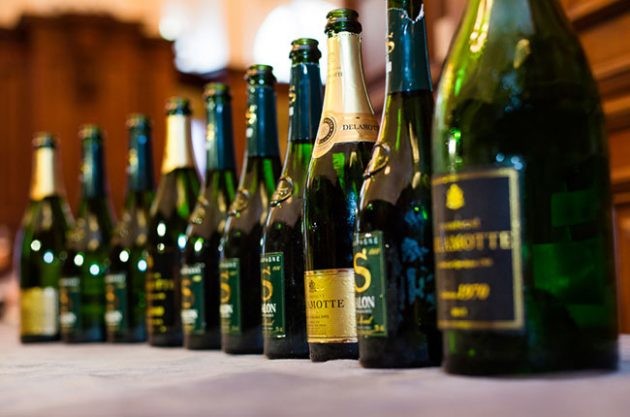Steven Spurrier, long-standing consultant editor at Decanter, reveals the Bordeaux wines that have stayed in his memory more than any others over his long career, thanks to their quality, what they meant to him at the time, and why they still stand out today.
This article first appeared in Decanter magazine’s 2017 Bordeaux supplement. Subscribe to Decanter here.
Château Haut-Bailly, Pessac-Léognan CC 2009
The cover of Decanter’s June 2010 issue, which covered the 2009 Bordeaux en primeur tastings, carried a quote from me: ‘The best vintage of my lifetime’. The vintage brought ripeness to the Cabernets, allowing them to blend with the more earthy Merlots to produce wines of elegance and vigour.
Haut-Bailly is one of my very favourite clarets, as much for the charm of the owners: first Daniel Sanders, then from 1979 his son Jean and especially his granddaughter Véronique Sanders, the current CEO under the ownership of Robert G Wilmers. I remember the 1955 in London in the 1960s and Haut-Bailly was always in my shop in Paris in the 1970s and 1980s.
There are bottles in my Dorset cellar from 2012 to 1998, including this superb 2009, which I placed third in the en primeur tastings in Pessac-Léognan, just after Haut-Brion and La Mission, noting its ‘undeniable beauty and class’.
Availability: £148 per bottle at Fine & Rare (UK) | $289.99 (in bond) at Wally’s (US)
Château d’Yquem, Sauternes 1CS 1988 in jeroboam
This was served at a lunch to open the splendid new Cheval Blanc cellar designed by 1994 Pritzker Architecture Prize-winner Christian de Portzamparc in 2011. Dom Pérignon flowed as we arrived and the red wines included the 2000 and 1990 Cheval Blanc.
Perfect though the Yquem was, I refused a second glass and after coffee got into my car to head to Bordeaux. For no reason I was stopped by the police and asked if I’d been drinking. Their breathalyser put me over 50mg/l and they took me to Libourne police station for an official test, which showed 54mg/l. A 10% excess being allowed, I was free to go.
That evening I attended a dinner at Haut-Brion, safe in the knowledge that when one encounters a perfect wine, one does not need a second glass.
Domaine de Chevalier, Graves 1941*
*unclassified, as before 1953
This was served at a lunch by Olivier Bernard, of Domaine de Chevalier. He didn’t know it was my birth year, so he unwittingly provided me with a rare pleasure, for 1941 was almost as poor a vintage as my wife’s – 1946.
Bernard noted that it was part of a batch acquired from a cousin of the estate’s previous owner, all re-corked at the château in 1994.
I remember it being still fresh in colour, no oxidation either on the nose or the palate, quite fully flavoured with good length and balance, despite being quite high in acidity. But it was Bernard’s faith in such a poor vintage to re-condition it and present it in its (and my) 60th year that I remember most.
Château Margaux, Margaux 1GCC 1985
Served from magnums for the opening of the Lord Foster-designed new chais at Château Margaux in 2015, this is the greatest claret I have drunk in recent years.
Although the 1982s launched Bordeaux into the modern world and are still superb, 1985 was almost as good (but less acclaimed), and I have never had a poor bottle from right across the Gironde.
But the memory here is Château Margaux itself, the perfect grandeur of the château among its vineyards, the old and new chais, past vintages such as 1953 and 1961.
In particular, from 1977, the dedication of the Mentzelopoulous family through three generations – André’s widow Laure and her daughter Corinne were Decanter Women of the Year in 1985 – and the skills and charm of the late Paul Pontallier, head winemaker from 1985 to 2015. If wine is art, it is Château Margaux.
Availability: £542.80 per 75cl bottle at Hedonism (UK) | $745 (in bond) at Sotheby’s (US)
Château Léoville Barton, St-Julien 2CC 1989
In my mind, Bordeaux is inseparable from the Barton family. Langoa and Léoville Barton are the only châteaux from the 1855 Classification, along with Mouton-Rothschild, that remain in the hands of the same family.
I enjoyed many visits at vintage time in the early 1970s under Ronald Barton, many more under his nephew Anthony and continuing, I hope, into the future with Anthony’s daughter Lilian.
To say that Léoville Barton is ‘benchmark St-Julien’ is inadequate, for it is the family’s expression of their vineyards, through thick and thin, since 1826 – and this is what shows. The 1989 was served at a dinner I gave in March 2004 for 40 people, to celebrate 40 years in the wine trade.
I had the 1986, 1988 and 1989 in my cellar – I’d already finished the 1985 – and asked Anthony Barton which vintage he would recommend. He unhestitatingly went for the 1989 from the heatwave year, a wine that warmed our hearts then and still would today.
Availability: £102.00 (in bond) at Fine & Rare (UK) | $335 (in bond) at Sherry-Lehman (US)
Château Figeac, St-Emilion 1GCC 1970
Figeac joins Haut-Bailly and Léoville Barton as my three favourite Bordeaux châteaux for the buildings – Langoa’s classic 18th-century chartreuse, Figeac’s 18th-century manoir and Haut-Bailly’s 19th-century gentleman’s residence – as well as for the family, in this case the Manoncourts, owners of Figeac since 1892.
Thierry Manoncourt, one of Bordeaux’s true heroes, inherited the château in 1947 and fathered over 60 vintages, one of the greatest being the 1970.
At L’Académie du Vin we held a comparative tasting of Figeac and Cheval Blanc from 1966 to 1971, and for me the dense 1970 and the exuberant 1971 took the palm.
For Michael Broadbent it is a ‘glorious 1970’. I love Figeac because it is so different from its neighbour (and once part of the same estate) across the road, made with 35% Cabernet Sauvignon to match the 35% Cabernet Franc grown on its fine gravelly croupes (banks). Like the château itself, it’s a marvellous example of discreet power.
The oldest Figeac in my cellar is the splendid 2001, but the 1970 still resonates in my mind.
Availability: $399.99 (in bond) at The Wine List of Summit (US)
Château Latour, Pauillac 1CC 1964
Starting out in the wine trade that year, I knew Latour as ‘the English château’, following its sale by the de Beaumont family to the Pearson Group and Harveys of Bristol in 1962.
President Charles de Gaulle was asked to prevent this prestigious estate falling to ‘Le Perfide Albion’, but merely stated that ‘they can’t take the land with them’.
Much-needed replanting began and stainless steel fermentation tanks were installed in time for the 1964 vintage, with picking starting on 25 September and finishing the day before the rains came to wreck the vintage for the more northerly Pauillacs.
Decanter’s Stephen Brook states that ‘no other Médoc wine can match Latour for power, depth of flavour and grandeur’ – and it is easy to agree.
My connections with Latour, first through the manager Jean-Paul Gardère in the 1970s, then Hugh Johnson as a director, David Orr as the last manager before the estate was sold to François Pinault, and since then Frédéric Engerer, have kept the château very much in my life, if not in my cellar. The 1964 is a monument.
Availability: £285.60 at Nickolls & Perks (UK) | From $310 (at auction) at K&L (US)
Vieux Château Certan, Pomerol 1961
Going through my memory, two wines stand out with personal family connections. The first is Château Pape Clément 1953, the wine I took from my London cellar to go with the packed supper that my mother had prepared for Bella and I to enjoy on our Golden Arrow train to Paris on the evening of our wedding, ahead of a life in France.
The second is Vieux Château Certan 1961, about which Bella’s father, who was staying with us in Paris in the mid-1970s, remarked, ‘I never knew wine could be this good’. So VCC it is – a château I have known through generations of the Thienpont family, the 1961 being made by the ebullient Georges Thienpont, who thought that ‘a magnum of claret is perfect for two gentlemen dining together, provided they have had a bottle of Champagne beforehand’.
VCC is my favourite Pomerol, the 1998 being a star in my Dorset cellar. The 1961 came from the reserves of Nicolas, the dominant Parisian wine merchant, at a very affordable price, and is a wonderful blend of elegance and power, as the marvellous VCCs still are today.
Availability: £573 per bottle listed at Crump, Richmond & Shaw (UK) | $2,895 per bottle at 20-20 Wine Merchants (US)
Château Mouton Rothschild, Pauillac 2CC* 1959
*until 1973, then promoted to 1CC
The greatest wine collector in Brazil (and one of the nicest possible people) is a gentleman named Célio Pinto de Almeida, who, with his wife Sonia, holds annual vertical tastings over two or three days from the greatest vineyards in the world. I was fortunate enough to be his guest on 6 and 7 May 2005 to taste 61 vintages of every single Art Label from 1924 to 1926 and 1945 to 2002.
We were 35 guests at the Locanda della Mimosa restaurant in Petropolis, once an imperial country estate outside Rio de Janeiro.
The first day covered 30 vintages, beginning with 2001 and ending with 1924. The 1959 was my only perfect score and the average of the group was a pure 100/100, with 1989 coming second on 97.5, while 1949, 1924, 1983 and 1982 were all equal on 92.5.
On the second day, with vintages from 2002 back to 1925, the famous 1945 topped the bill at 97.5, with 1986, 2000 and 1953 equal on 95, and 1985, 1996, 1950 and 1961 following on with 92.5. I described it as possessing ‘exotic robustness’; Michael Broadbent, as usual, goes one better, with ‘magnificence piled upon magnificence’.
Availability: £2,262 per bottle at Capital Vintners (UK) | $1,999.98 per bottle at Wine House (US)
Château Lafite Rothschild*, Pauillac* 1806
*unclassified, as before 1855
**Known as simply ‘Lafite’. Baron James Mayer Rothschild did not buy the château until 1868.
This wine completes the Pauillac triumvirate in my selection and is always my answer to the question: ‘What is the most memorable wine you have ever drunk?’
The restaurant Darroze in southwest France had one of the greatest cellars in the country, much of which I packed up in the early 1980s for sale at Christie’s.
The 1806 had been re-corked at the château in 1953 and six bottles each sold to Darroze, Le Chapon Fin in Bordeaux, Le Coq Hardi at Bougival and Le Taillevent in Paris. The occasion was September 1969, the host a close friend and (mostly) Burgundy lover, David Fromkin, and the guests Martin Bamford MW (we were all staying at Château Loudenne which he managed for IDV), my wife Bella and two others.
After Dom Pérignon and Marquis de Laguiche’s Montrachet, this was the first red wine, not decanted to avoid oxidation, but poured directly into the glass.
The colour was a fading but clear red, the nose delicate with red fruits present, the finish firm and fragrant and then, after 30 minutes, it died away, but its memory did not.
Availability: Auction only – One bottle sold for $12,000 at Christie’s in Los Angeles, 2007
Steven Spurrier is Decanter’s consultant editor and Decanter Man of the Year 2017
Translated by Sylvia Wu / 吴嘉溦
All rights reserved by Future plc. No part of this publication may be reproduced, distributed or transmitted in any form or by any means without the prior written permission of Decanter.
Only Official Media Partners (see About us) of DecanterChina.com may republish part of the content from the site without prior permission under strict Terms & Conditions. Contact china@decanter.com to learn about how to become an Official Media Partner of DecanterChina.com.











Comments
Submit